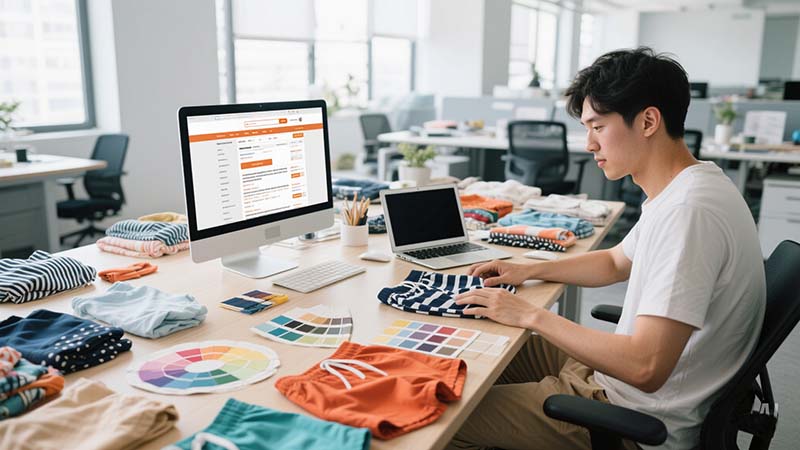
If you’re dreaming of launching your own swim shorts brand, the first real mountain to climb is this: finding a manufacturer you can actually trust. It’s trickier than it sounds.
The best way to find a reliable swim shorts manufacturer is to start by defining your needs—MOQ, customization level, quality standards—then narrow down suppliers through platforms like Alibaba, Google, and trade shows. Request samples, evaluate communication and product quality, and don’t rush into contracts before vetting reviews or visiting the factory.
This is where it all begins. Let's break it down together.
Step 1: How to Define Your Swim Shorts Requirements Like a Pro

Before I even thought about picking a manufacturer, I had to get crystal clear on what I actually wanted to make. Sounds simple, right? But trust me—this part is where your brand really begins.
How do I define my swim shorts requirements clearly?
Start by thinking through your target customer, the look and feel of your brand, and what features matter most—fabric type, inseam length, lining, prints, pockets, waistband style, and more. Create a spec sheet or mood board to guide your manufacturer. The clearer your vision, the smoother the production process.
Don’t skip this step. A vague idea won’t get you a product people love.
Who is my ideal customer?
The whole design starts here. Not with colors. Not with fabrics. But with who you're making these shorts for.
Start by asking yourself:
- Are they surfers, travelers, or chill-by-the-pool guys?
- Do they care about high performance or just comfort and style?
- What’s their age range and budget?
Knowing your audience helps shape everything—fit, vibe, and price point. For me, I imagined someone who’s a little outdoorsy, values comfort, and wants a pair of shorts he can wear from the beach straight to a casual dinner. That gave me a design north star.
Create a customer profile
Jot it down. Give him a name if you want—“Beach Bro Ben.” Describe what a day in his life looks like. The more specific, the better.
What fabric and features do I need?
This is where your shorts really come to life. Features aren’t just bells and whistles—they’re how your shorts stand out.
Here’s what to consider:
- Fabric: Polyester for fast-drying, nylon for softness, spandex for stretch.
- Lining: Mesh, boxer-brief lining, or unlined? Each has its pros and cons.
- Waistband: Drawstring only or with elastic?
- Length: 5", 7", or 9" inseam?
- Pockets: Side pockets, back pockets, zipper closures?
- Prints: Are you going bold, or sticking to solids?
My early mistake
I once chose a super cool print—but forgot to test how it looked after being sublimated on polyester. The colors came out dull and lifeless. Never again. Always ask for print samples on the actual fabric you're using.
How do I communicate my design ideas?
Even if you’re not a designer, you can still build a killer brief.
What helps most:
- Inspiration photos (Pinterest is your friend)
- Rough sketches or hand-drawn mockups
- Measurements and details (inseam, outseam, waistband height, etc.)
- Tech pack or spec sheet (don’t worry—it can be simple)
- Color swatches or Pantone codes
- Label/tag/packaging ideas
The goal? No guesswork. The more visual and clear, the better. Most factories are great at producing—not mind-reading.
Pro tip: Use a sample you love
Send them a physical sample of a pair you like and note what you'd change. This shortcut saves SO much back-and-forth.
What are my deal-breakers?
You’ll thank yourself for being clear on your non-negotiables before you get quotes.
Define your must-haves:
- “I won’t compromise on a soft liner.”
- “MOQ must be under 300 units.”
- “Lead time can’t be longer than 30 days.”
- “Must offer custom branding—no blanks.”
Once you know what matters most, it's easier to filter out manufacturers who can’t deliver.
Conclusion
The clearer you are with your swim shorts vision, the better your chances of turning that vision into something real, wearable, and sellable.
✅ Define ideal customer before design. True
Understanding the target user guides fit, features, and branding choices.
❌ Start with fabric selection first. False
Design should follow customer needs—not begin with materials.
Step 2: Should You Choose a Local or Overseas Swim Shorts Manufacturer?

When I first started sourcing for my brand, one question kept me up at night: Should I go local or overseas for my swim shorts manufacturing? It felt like choosing between speed and cost, control and scale.
Is it better to choose a local or overseas swim shorts manufacturer?
Local manufacturers offer faster turnaround, easier communication, and hands-on quality control, making them ideal for small, early-stage brands. Overseas factories—often in countries like China, Vietnam, or Bangladesh—provide lower costs and more customization options, but come with longer lead times and communication challenges. Your decision depends on your priorities: budget, order size, and timeline.
Let’s talk real-world pros, cons, and how to make the right call for your brand.
What are the real advantages of working with a local manufacturer?
Honestly, if you're someone who likes to be in the room where it happens, local might be your best friend.
Why local manufacturers can be a smart move:
- Quick communication – No time zone math or language hurdles
- Faster samples and shipping – Great for testing and tight launches
- Easier factory visits – You can see what’s really going on
- Smaller MOQs – Ideal if you’re just starting out
- “Made in USA” branding power – Some buyers value local production
But here’s the catch…
You’ll pay more—sometimes a lot more. Labor costs are higher, and customization might be more limited. I once got a quote from a local shop for $48 per pair, no tags, no packaging, nothing fancy. At that rate, I couldn’t sell them with a margin unless I priced like a luxury brand.
So why do so many swimwear brands go overseas?
Short answer? Scale and cost.
Here’s what you get with overseas manufacturers (especially in Asia):
- Lower unit costs – Critical when margins matter
- More customization – Sublimation, trims, liners, everything
- Experienced factories – Many specialize in swimwear and board shorts
- Flexible production capacity – From 300 to 30,000 pieces
My overseas journey
When I found a factory in Vietnam through a trade contact, they shipped me a sample that was nearly perfect on the first go. It was 60% cheaper than a U.S. option—with better finishing. The catch? It took three weeks to arrive and lots of back-and-forth on WhatsApp. Still, worth it.
What are the challenges of going overseas?
Let’s be real—it’s not all sunshine and savings.
Here’s what to watch for:
- Longer lead times – Especially with global shipping delays
- Language and cultural gaps – Can lead to misunderstandings
- Higher MOQs – Factories want scale
- Harder quality control – You’re not there in person
- IP concerns – If your designs are unique, this matters
How I navigated the distance
I asked for video walkthroughs of the factory, QC photos of my orders, and built in buffer time for shipping. It wasn’t always smooth, but over-communicating saved me from major headaches.
Local vs. overseas: How do I decide?
It depends on where you’re at in your brand journey.
Here’s a simple cheat sheet:
| Decision Factor | Choose Local If… | Choose Overseas If… |
|---|---|---|
| Budget is tight | ✘ Not ideal | ✅ Much more cost-effective |
| MOQ is low | ✅ Great for small batches | ✘ May require 300–500+ pieces |
| Timeline is urgent | ✅ Faster sample and production turnaround | ✘ Shipping adds weeks |
| You need control | ✅ You can visit, check, and test | ✘ Harder to monitor day-to-day |
| You want full custom | ✘ Often limited | ✅ Huge range of fabrics, prints, branding |
| You’re just testing | ✅ Easier to get prototypes done quickly | ✘ Riskier for first-time orders |
Can I start local and switch overseas later?
Absolutely—and I highly recommend it.
Start local to refine your product, get feedback, and understand the process. Once you’re confident in your design and ready to scale, use everything you’ve learned to find an overseas partner who can take things to the next level.
It’s not an either-or forever. It’s a phase decision.
Conclusion
Whether you choose local or overseas, what matters most is finding a manufacturer who understands your vision—and can grow with you. Start small, stay smart, and always keep your goals front and center.
✅ Local = faster turnaround and low MOQs. True
Local factories help early brands test quickly with small orders.
❌ Overseas always means lower quality. False
Overseas manufacturers can offer excellent quality—if vetted properly.
Step 3: Best Ways to Find and Shortlist Reliable Swim Shorts Manufacturers
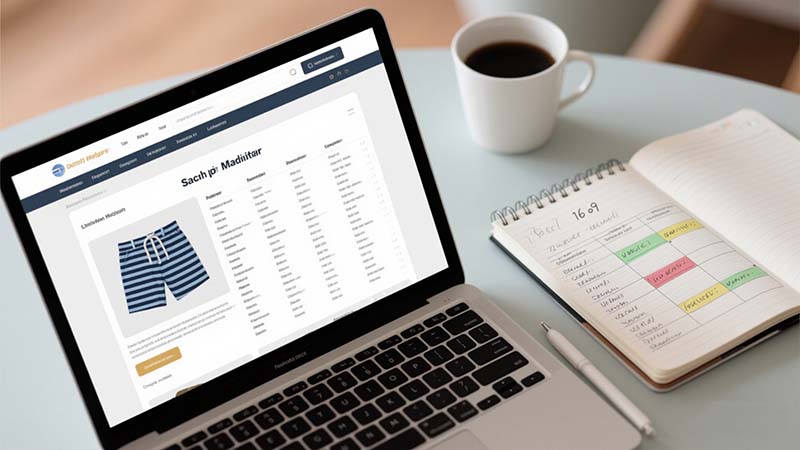
Finding a reliable swim shorts manufacturer isn’t just about Googling and hoping for the best. I learned (sometimes the hard way) that it takes strategy, patience, and a bit of detective work.
What’s the best way to find and shortlist trustworthy swim shorts manufacturers?
Start by identifying your product needs, then explore platforms like Alibaba, Google, and trade shows. Ask for samples, check reviews, and look for manufacturers with solid swimwear experience. Use a scoring system to compare quality, communication, lead time, and flexibility before choosing your top candidates.
Let me walk you through what worked for me—and what to avoid.
Where should I begin searching for manufacturers?
I know, it feels overwhelming at first. But there are a few reliable places I always go back to.
Best sources to find swim shorts manufacturers:
- Alibaba – Filter by “verified” and “trade assurance.” Read company profiles carefully.
- Google Search – Keywords like “custom swim shorts manufacturer” + your region.
- Trade shows – Like MAGIC (USA), Canton Fair (China), or ISPO (Germany).
- Online directories – Makers Row, ThomasNet, and Kompass.
- Networking – DM other small brands, ask in startup forums or Facebook groups.
My quick search trick
I once found a great manufacturer just by searching “private label board shorts manufacturer + Vietnam” and checking past client photos on their website. A little digging goes a long way.
What criteria should I use to shortlist manufacturers?
This part is crucial. I use a simple scoring sheet (1–5 scale) based on:
| Criteria | Description |
|---|---|
| Responsiveness | Do they reply quickly and clearly? |
| Swimwear Experience | Do they specialize in board shorts or just dabble? |
| Customization | Can they handle my designs, linings, and branding? |
| MOQ | Is their minimum order realistic for me? |
| Sample Quality | Are the samples well-made and consistent? |
| Lead Time | Can they deliver within my timeline? |
| Reviews/Referrals | Do other brands recommend them? |
Shortlist your top 3–5 factories before diving deeper.
Watch out for these red flags
- Vague answers or dodging questions
- Poor English or slow communication
- No photos of past work or inconsistent samples
- Overly aggressive sales push
- No business registration info or trade history
Trust your gut. If it feels off—it probably is.
Should I request samples before committing?
Yes. A thousand times yes.
Always order a sample before placing bulk orders. It helps you check:
- Fabric feel
- Stitching and seam quality
- Color accuracy
- Sizing consistency
- Print durability
Pro tip: Ask for a customized sample, not a generic one. Even if you pay more, it tells you how well they follow your specs.
Can I negotiate with multiple manufacturers?
Absolutely—and you should.
Once you’ve narrowed down your list, get quotes from each and ask:
- Can you offer tiered pricing (100/300/500 pcs)?
- Can I mix sizes and prints in one order?
- Is custom packaging included?
- What are the payment terms?
Comparing these responses will show you who’s flexible and who’s stuck in their ways.
Use a Google Sheet to track everything
I made a spreadsheet with tabs for:
- Contact info
- Quotes
- Sample feedback
- Communication notes
It saved my brain—and helped me make a decision I didn’t regret later.
Conclusion
Finding a manufacturer isn’t about luck—it’s about knowing what to look for and staying organized. Your dream partner is out there. You just have to dig a little.
✅ Always request a custom sample. True
Custom samples show if a manufacturer can follow your exact specs.
❌ Skip background checks if the sample looks good. False
Even great samples can't guarantee reliability—verify experience and reputation.
Step 4: 10 Questions You Must Ask Every Swim Shorts Manufacturer
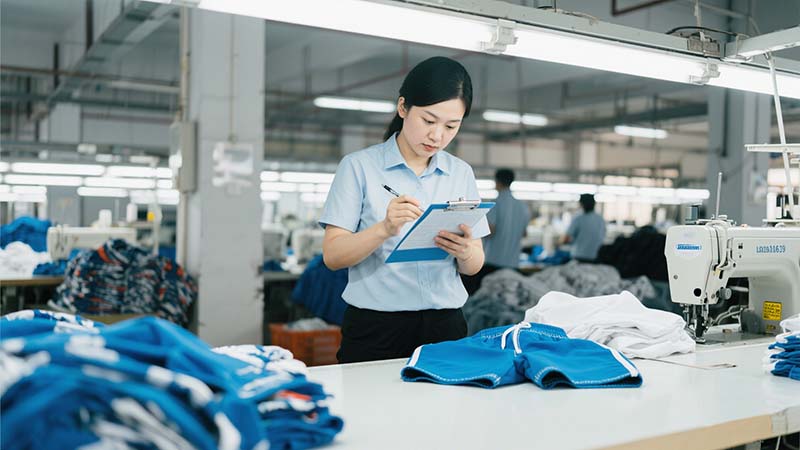
Choosing a swim shorts manufacturer without asking the right questions? Yeah, I’ve been there. Let’s just say it ended in awkward stitching, see-through fabric, and a box of regret.
What questions should I ask a swim shorts manufacturer before placing an order?
You need to ask about MOQ, production timelines, customization options, sample policies, payment terms, quality control, and their experience with swimwear specifically. These questions protect your brand, your budget, and your peace of mind. Get clear answers before you commit—and trust your gut if anything feels off.
Here’s my go-to list I wish I had when I started out.
1. What’s your minimum order quantity (MOQ)?
Some factories won’t touch an order under 1,000 pieces. Others are more startup-friendly.
Why it matters:
You don’t want to design your dream shorts only to realize you can’t afford the first run. Ask if you can mix sizes, colors, or prints within the MOQ—it helps a lot when testing.
Bonus Tip: Negotiate starter batches
I’ve had luck negotiating a 100-piece run by agreeing to reorder later. If your factory likes you, they might flex.
2. What’s your sample policy?
This tells you a lot about how they do business.
Ask:
- How much is the sample fee?
- Can I get a fully customized sample?
- How long does it take?
- Is the fee refundable if I place a bulk order?
Good manufacturers want you to love your product before committing.
3. How long is your production lead time?
Delays kill momentum, especially for seasonal drops.
Get specific:
- Sample lead time
- Bulk production time
- Shipping time
- Are there factory holidays I should plan around?
If they’re vague or avoid the topic? That’s a red flag.
4. What fabrics do you offer?
Not all polyester is created equal. And don’t even get me started on thin, crunchy mesh linings.
Ask for fabric options and swatches. Look for quick-dry, fade-resistant, 4-way stretch options if that’s your vibe.
5. Can I add my branding?
This includes:
- Woven labels
- Heat-pressed logos
- Custom drawstrings
- Printed pockets
- Packaging (poly bags, tags, boxes)
It’s your brand—don’t settle for blanks with a sticker.
6. What swimwear products have you made before?
This isn’t the time to be their guinea pig.
Ask for photos of past work and check if they’ve made anything similar to what you’re envisioning. If they only do gym shorts or leggings, they might not be right for you.
7. Do you have quality control in place?
I once received shorts with crooked waistbands. Ever tried selling that?
Ask about:
- In-house QC process
- Pre-shipment inspections
- Whether they can send QC photos or videos
Trust but verify.
8. What are your payment terms?
This part can get awkward—but it’s essential.
Common terms:
- 30% deposit, 70% before shipment
- Full payment before production
- Escrow or trade assurance if you’re on Alibaba
Make sure you're clear—and get everything in writing.
9. Can I visit your factory or get a video tour?
Even if you can’t go in person, ask for photos or a video walkthrough.
This shows they’re real, organized, and proud of their space. I once asked this and got a shaky vertical phone tour—and honestly, it told me a lot.
10. What happens if there’s a defect or issue?
Good manufacturers own their mistakes. Ask them how they handle:
- Defects
- Returns
- Replacements
Their attitude here will tell you everything you need to know about working with them long term.
Conclusion
Asking the right questions doesn’t just help you find a manufacturer—it helps you find a partner. Take notes, trust your instincts, and don’t be afraid to walk away if the answers don’t feel right.
✅ Ask about sample policy and lead time. True
Clear timelines and sample terms protect your production flow.
❌ Assume all polyester or mesh is the same. False
Fabric quality varies—always request swatches and test them.
Step 5: How to Evaluate Swim Shorts Samples and Check Factory Capabilities
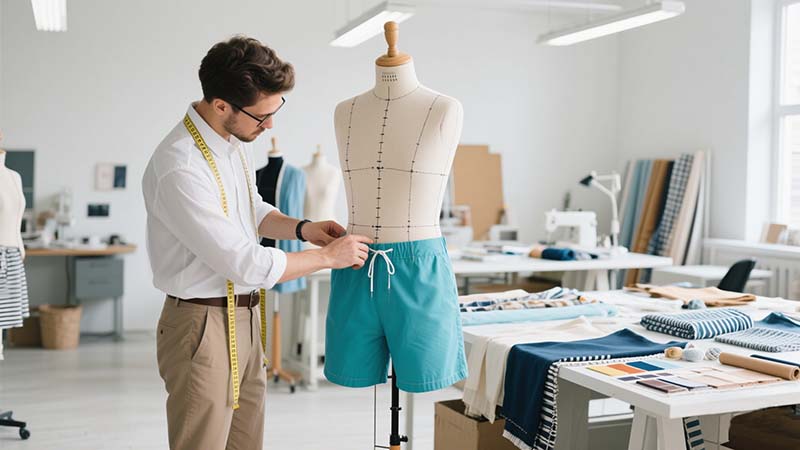
When I finally held my first swim shorts sample in hand, I was excited—but also nervous. How do I know if this is good enough? Evaluating samples isn’t just about looks. It’s about spotting the details that signal whether a factory can truly deliver.
How do I evaluate swim shorts samples and assess a factory’s capabilities?
Start by checking the fit, stitching, fabric quality, color accuracy, and branding details. Test for durability through washing and stretching. Then, assess the factory's consistency, communication, ability to follow specs, and willingness to improve. Samples are a window into how your full production will turn out—so examine them like a customer and a brand owner.
Let’s break it down so you can confidently say, “Yep, this is the one.”
What should I look for when the sample arrives?
Opening that package is exciting—but don’t let the hype blind you.
Here’s what I check first, in order:
- Packaging presentation – If they skimp on this, what else did they skip?
- Fabric feel – Soft, quick-dry, flexible? Or stiff and scratchy?
- Stitching – Look for clean seams, no loose threads or crooked lines
- Print accuracy – Are the colors rich and aligned? Does it match your design?
- Fit and comfort – Try them on or test on a fit model. How do they feel?
- Waistband & drawstring – Is the tension right? Does it return to shape?
- Mesh lining (if included) – Comfortable or too tight/itchy?
Try this: Wear test it for a day
I literally wore mine to the beach, sat in saltwater, ran errands, then washed them twice. That told me way more than a photo ever could.
How do I test the durability and functionality?
It’s easy to get caught up in colors and style. But we’re making gear, not just clothes.
Run these basic tests:
- Wash test – Machine wash and air dry. Does the color hold? Do the seams stay intact?
- Stretch test – Gently pull on seams and waistband. Do they snap back or stretch out?
- Fade test – Leave it in sunlight for a few hours. Does it fade quickly?
- Sand test (optional but fun) – Rub dry sand into the pockets and see how easily it shakes out.
Make notes for every result. I keep a simple “Sample Scorecard” spreadsheet so I can compare across factories.
What does the sample say about the factory?
Think of the sample like a résumé. It reflects their attention to detail, process, and professionalism.
Here’s what I read between the lines:
- Did they follow my brief? If anything’s off, did they explain why?
- Is the construction consistent? Uneven stitching means poor QC.
- Did they include branding details I asked for? Like woven labels, heat-press logos, etc.
- Was it packaged neatly? Even a sample should feel “retail-ready.”
- How did they communicate throughout the process? Were they proactive and detailed?
Green flags to look for
- Factory sends photos or videos during sampling
- They ask questions to clarify your brief
- They point out improvements or suggest better materials
- They include extra swatches or trims with the sample
How can I evaluate their production capabilities from a sample?
Good question—because one nice sample doesn't always mean reliable bulk production.
Ask for these during the sample phase:
- Photos of previous swimwear productions
- Factory certifications (BSCI, WRAP, etc.)
- Production lead time and daily capacity
- Team size and quality control process
- Other brands they’ve worked with
If possible, get a virtual or live factory tour. Even a short 2-minute phone video can give you huge insight into their setup.
| Capability | What to Ask | Why It Matters |
|---|---|---|
| Swimwear Experience | % of production in swimwear | You want specialists, not generalists |
| QC System | How do they check each piece? | Catches defects before they reach you |
| Flexibility | Can they handle last-minute tweaks? | Shows adaptability |
| Consistency | Will bulk match the sample? | Prevents costly surprises |
What if the sample isn’t perfect?
Don’t panic. The first sample is rarely perfect. What matters is how the factory handles feedback.
Ask yourself:
- Do they take your notes seriously?
- Do they suggest helpful fixes?
- Are they open to a second sample (and how much does it cost)?
- Are they respectful or defensive?
One factory I worked with didn’t nail the waistband tension on Sample #1. But their follow-up questions, willingness to redo it for free, and the quality of Sample #2? That won me over.
Conclusion
Samples don’t just show the product—they reveal the people behind it. Look closely, test thoroughly, and trust how the process feels just as much as how the shorts look.
✅ Test samples for fit and durability. True
Real-world wear and wash tests show product quality and comfort.
❌ Approve samples based on looks only. False
Looks can deceive—function, stitching, and specs matter just as much.
Step 6: Negotiating Terms With Swimwear Manufacturers – What to Know

I used to think negotiating with manufacturers was all about pricing. Turns out—it’s way more than that. If you know what to ask for, you can set yourself up for smoother production, better quality, and fewer “uh-oh” moments down the line.
What should I know when negotiating terms with swim shorts manufacturers?
Beyond just price, negotiate key terms like MOQ flexibility, payment schedules, lead times, revisions, defect handling, and branding options. Be polite but clear, and always get everything in writing. Good negotiation isn’t about squeezing them—it's about creating a win-win partnership that can grow with your brand.
Here’s everything I’ve learned from negotiating my own deals—mistakes, wins, and all.
What terms are actually negotiable?
You’d be surprised at what manufacturers are willing to bend on—especially if you’re respectful and prepared.
Here’s what you can (and should) negotiate:
- MOQ (Minimum Order Quantity) – Ask if you can mix styles/sizes/colors
- Pricing tiers – Negotiate based on quantity (100 / 300 / 500 pcs)
- Sample cost – Some waive it with a bulk order
- Lead time – Can they speed things up if needed?
- Payment terms – Standard is 30/70, but some accept smaller deposits
- Packaging & branding – Custom tags, polybags, boxes
- Defect policy – How they handle replacements or refunds
Real talk: be flexible, not pushy
One factory ghosted me after I pushed too hard for a low MOQ and free sample. I learned to lead with transparency: “Here’s my budget and goal—can we make this work?”
How do I bring up pricing without offending them?
It’s all about tone and timing.
Try this approach:
- Ask for a quote based on different order sizes
- Say, “My target price is around $X per unit. Is there a way to get close to that?”
- Frame it as partnership: “I’d love to build a long-term relationship. What can we do together?”
Factories respect honesty. If they can’t lower the price, they might offer something else—like better packaging or quicker delivery.
Negotiation is more than numbers
In one case, a factory couldn’t meet my price. But they offered better stitching and upgraded lining for the same quote. That mattered more to my customers.
What red flags should I look out for?
There’s a difference between being firm and being shady.
Walk away if a factory:
- Refuses to answer questions clearly
- Can’t provide a sample before bulk
- Pushes for full payment up front
- Ignores your product specs or changes them without telling you
- Is vague about lead times or shipping
If they don’t respect you during negotiation, imagine how they’ll treat you during production.
What’s the best way to structure payment terms?
This is where it gets real—because money's on the line.
Standard payment terms:
- 30% deposit, 70% before shipment (most common)
- 50/50 for smaller or new factories
- 100% upfront for tiny sample orders
- Trade Assurance / Escrow (on Alibaba) for added safety
Pro tip: Don’t pay through PayPal Friends & Family
Always use secure, trackable methods—even if it costs more. Protect yourself.
How do I confirm everything we agreed on?
You need it in writing. Always. No matter how friendly the chat was.
Send a recap email or contract with:
- Final price per unit
- MOQ and breakdown by style/size/color
- Production lead time
- Sample timeline
- Payment schedule and methods
- Shipping terms (FOB, CIF, etc.)
- What happens if quality issues arise
Even better if you can get them to stamp it or sign it. Trust is good. Contracts are better.
What if I’m a small brand—do I still have leverage?
Absolutely. Your leverage is your potential.
Tell them your plan:
- You’re launching soon
- You’re planning multiple drops
- You’re looking for a long-term partner
Factories know that helping a small brand now could lead to big orders later. I once had a factory drop their MOQ from 300 to 100 units because I showed them mockups, branding plans, and a solid timeline.
Conclusion
Negotiating with manufacturers isn’t about winning—it’s about aligning. Be honest, stay respectful, and don’t be afraid to ask for what you need. The right partner will meet you halfway.
✅ Negotiate more than just unit price. True
MOQ, lead time, payment terms—all impact your success.
❌ Accept verbal agreements without written proof. False
Always confirm terms in writing to avoid costly misunderstandings.
Step 7: Quality Control and Shipping for Swim Shorts – Complete Checklist
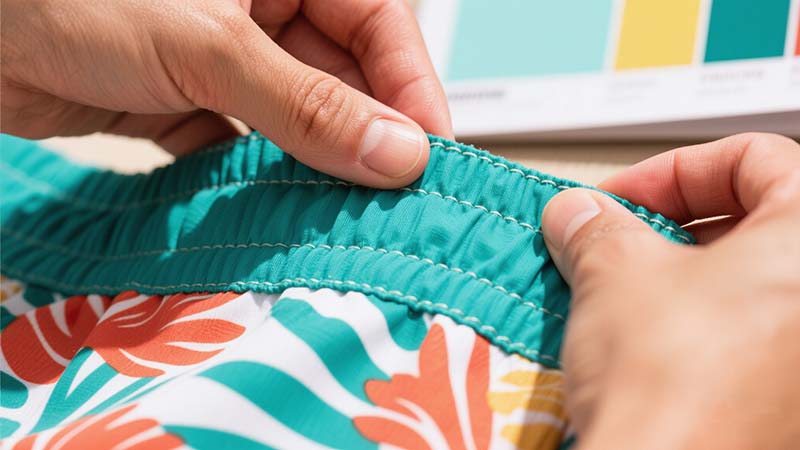
Getting your swim shorts made is only half the battle—what comes next is making sure what arrives at your doorstep (or warehouse) is exactly what you expected. Trust me, the last thing you want is to open a shipment and find shorts that look nothing like your sample.
What should be included in a quality control and shipping checklist for swim shorts?
Your QC checklist should cover measurements, stitching, color, print alignment, waistband strength, logo placement, and packaging. For shipping, confirm incoterms, box labeling, freight forwarder info, and insurance. Check pre-shipment photos and get tracking before anything leaves the factory.
Let’s walk through a full checklist I use before saying, “Ship it!”
What should be on my quality control checklist?
Before the shorts get boxed up and sent out, someone (either the factory or a third-party inspector) needs to make sure they meet your standards.
Here’s my go-to swim shorts QC checklist:
🧵 Construction & Stitching
✅ No loose threads or skipped stitches
✅ Flat, straight seams throughout
✅ Secure bar tacks on stress points (pockets, waistband ends)
✅ Waistband elastic stretches and returns smoothly
✅ Drawstrings are even and knotted properly
📏 Sizing & Measurements
✅ Inseam, outseam, waistband, and leg openings match tech pack
✅ Liner (if included) sits correctly and doesn’t bunch
✅ Consistent fit across size range (S, M, L, etc.)
🎨 Print & Branding
✅ Print is sharp, not blurry
✅ Pattern is centered and symmetrical (especially with bold prints)
✅ No dye bleeding or fading
✅ Heat-pressed/woven logos placed accurately
✅ Label and hangtag info is correct
🧼 Fabric Quality
✅ Fabric matches approved sample (color, weight, handfeel)
✅ Quick-dry, breathable, and colorfast
✅ No stains, holes, or pilling
📦 Packaging
✅ Correct polybag or custom packaging used
✅ Hangtags attached cleanly
✅ Size stickers and barcodes placed as requested
✅ Bulk is sorted and packed per your PO (style, size, color)
Pro tip: Get Pre-Shipment Inspection Photos
Ask for 15–20 clear photos of:
✅Finished units
✅Packaging
✅Label close-ups
✅Inside seams
✅Logos and prints
This visual check saved me from approving a batch that had upside-down back pockets once.
What needs to be checked before shipping?
Shipping is a whole other beast. But with the right prep, it doesn’t have to be scary.
Here’s your Swim Shorts Shipping Checklist:
🚚 Shipping Terms & Documents
✅ Confirm incoterms (FOB, CIF, DDP, etc.)
✅ Get commercial invoice + packing list
✅ HS Code for customs (for swimwear: usually 6211.11)
✅ Country of origin marked correctly on shorts
✅ Export license (if needed)
📦 Packaging & Logistics
✅ Cartons are labeled with style, size, and quantity
✅ Units per box match your order
✅ Cartons are sealed and water-resistant
✅ Gross and net weights are provided
✅ Box dimensions shared for freight calculation
📦 Freight & Forwarding
✅ Confirm freight method: air, sea, or courier
✅ Share or receive freight forwarder contact info
✅ Ask for estimated delivery date and tracking
✅ Confirm who’s handling customs (you or your agent?)
✅ Ask about shipping insurance for high-value orders
🔁 Backup Plan
✅ Build in buffer time in case of delay
✅ Ask for defect rate in production (%), and how they’re handled
✅ Confirm refund/replacement policy if shipment is damaged or delayed
Should I use a third-party QC inspector?
If you can’t visit the factory yourself, YES.
Third-party inspectors (like QIMA, Bureau Veritas, or SGS) will go to the factory, inspect your order, and give you a detailed report. It costs ~$150–$300 per inspection, but it can save you thousands in disaster control.
I used one for my first overseas batch and caught an issue with mislabeled sizes before they left port. Worth every penny.
Conclusion
Quality control and shipping aren’t the fun part—but they’re the reason your brand won’t get buried in refunds and bad reviews. Build your checklist, follow it religiously, and treat it like part of your product.
✅ Inspect stitching, fit, and print before shipping. True
QC prevents costly surprises—check key features match your sample.
❌ Approve shipment without pre-shipment photos. False
Skipping visual checks risks receiving incorrect or damaged products.
Final Thoughts
Finding the right swim shorts manufacturer takes time, but doing it right saves you thousands in returns, lost customers, and brand damage. Focus on building a long-term relationship, not just chasing the cheapest price.
.png)




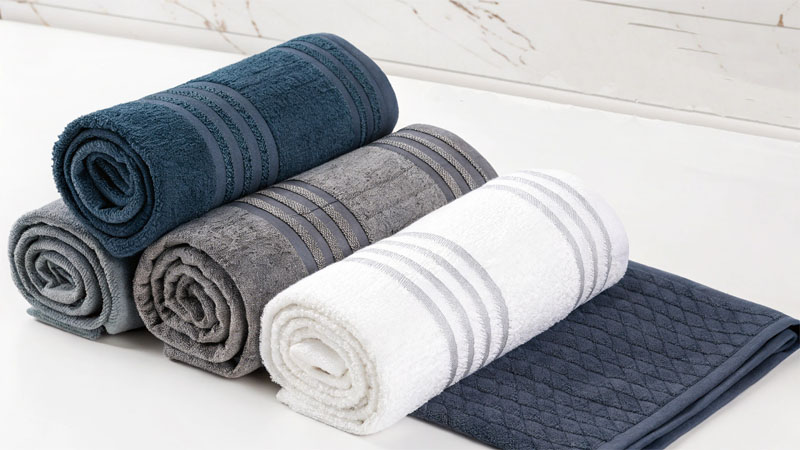
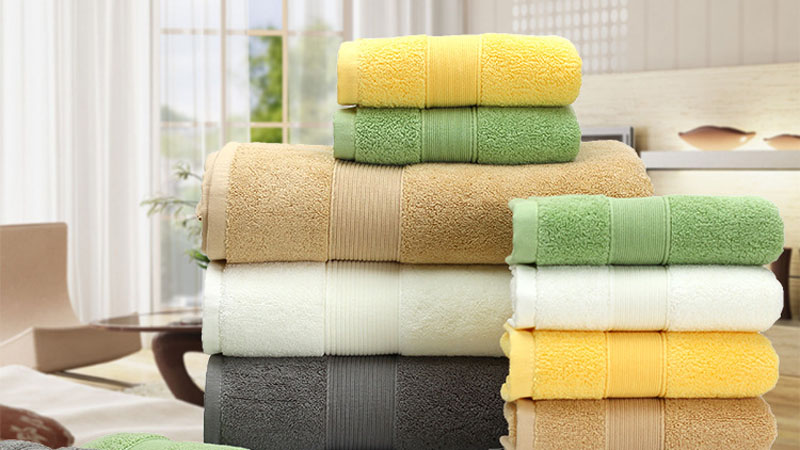
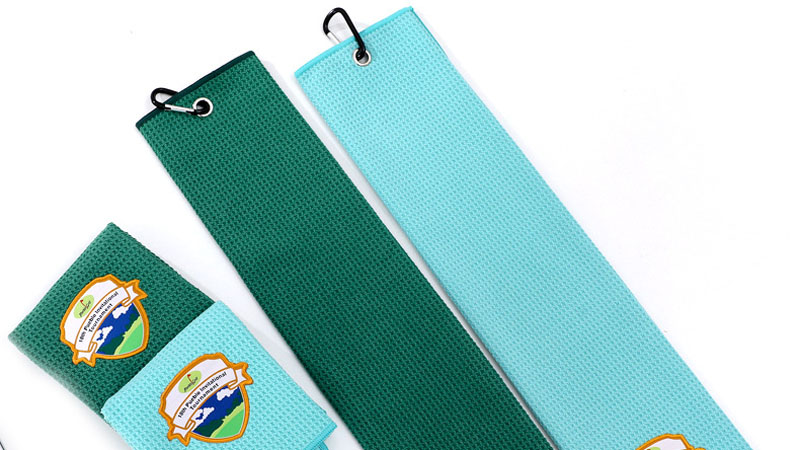
-1024x337.png)